After months of threatening a Rafah invasion, Israel finally went in. They quickly took the civilian crossing with Egypt - in violation of the peace treaty negotiated between the two countries to Israel’s great advantage in the 1970s. They planted Israeli flags at the crossing, blasted the sign saying “I love Gaza”, and declared a kind of “Mission Accomplished” moment.
But like George W Bush’s speech which was supposed to be the end of the Iraq war but was actually the beginning of the Iraq insurgency and a major step in the long-term erosion of American supremacy, Israel’s declaration of victory is premature.
Over the next few days, Palestinian resistance groups initiated a series of operations (many of which they recorded in dramatic field videos) at a tempo nearly unmatched in the war, now in its eighth month. Resistance spokesman Abu Obeida told listeners that the fighters had scored hits on 100 Israeli military vehicles in 10 days in Rafah in the south of Gaza, Jabalia in the north, and Zeitoun in the north (from which the Israelis have since withdrawn). Israeli soldiers, Abu Obeida said, were suffering casualties “by the dozen”.
Under heavy fire in both Rafah and Jabalia, Israel is likely to withdraw from these areas as well. We can then expect a return to aerial bombardment and siege warfare on the starving population. Then more raids, perhaps into the middle of Gaza, during which Israel will lose more soldiers and more vehicles, before withdrawing. Then a period of bombing, then more raids. All the while, Lebanon’s Hizbollah will be hitting military installations on Israel’s northern border with escalating firepower and Yemen’s Ansarallah will be tightening a blockade on ships trading with Israel.
Based on the experiences of the 2006, 2008/9, 2012, 2014, and 2021 wars, Israel would have been expected to have accepted a ceasefire by now, having settled for the demonstration effect of killing between 40,000 - 200,000 or more (according to an estimate made by Ralph Nader) and unwilling to bear the growing costs in soldiers’ lives, displaced Israelis, and economic difficulties.
Why has Israel been so determined this time, compared to previous times? Is it the case that, having mobilized around half a million men, that the numbers of casualties sustained in these ground operations is bearable by Israel, even if Israeli casualties reach the thousands or even tens of thousands?
This is, likely, the calculation. Israel has mobilized all available troops and the US has provided all the firepower Israel can wield. But this approach of maximal firepower and maximum mobilization - of overkill and of over-mobilization - has disconnected Israel from normal military calculations and normal strategic thinking, rendering it vulnerable to the resistance’s counter-strategies.
To understand this vulnerability, let’s break down Western wars in history into three types: Clausewitzian, counterinsurgency, and genocidal.
Clausewitz says war is policy by other means; Counterinsurgency wars are about controlling a population; Genocidal wars are about destroying the foundations of life.
Clausewitz’s book On War uses the campaigns of Frederick the Great, the Prussian king who fought with his European neighbours, and of Napoleon, who fought all the rest of Europe combined (while also fighting a genocidal war against Haiti, but we’ll leave that aside for this article). In these wars, the goal is to inflict losses on the enemy’s military to compel the loser to do the winner’s bidding.
In colonial counterinsurgency wars, the goal is population control. Insurgent leaders are targeted for assassination. Insurgent and insurgency-suspected organizations are dismantled by arrest and imprisonment, physical destruction, and sabotage. Compliant leaders are installed and supported. Populations are overawed and terrorized by campaigns of torture and demonstrative massacres, including “punitive raids”. Recent examples of these wars are the US wars on Iraq and Afghanistan, and general Israeli behavior in the West Bank.
In colonial genocidal wars, the goal is extermination. Food sources are targeted - both stored food and crops. Masses of people are killed indiscriminately including women, children, noncombatants. Survivors of massacres are driven into unlivable areas to die and ringed with enough firepower to kill them if they try to escape. Many of the US “Indian Wars” followed this pattern (see Stannard’s American Holocaust and Grenier’s The First Way of War) as did the German genocides of the Herero in 1905 and the Nama in 1908, reported in, e.g., The Kaiser’s Holocaust.
Israel has been trying to conduct a genocidal war on Gaza since 2005. The idea was to surround Gaza with the Gaza fence and the ring of settlements known as the Gaza envelope; to use automated weapons, AI targeting, and frequent “mowing the lawn” aerial massacres to prevent exit without being labor-intensive; and to gradually render the entire Gaza Strip unlivable by the destruction of farmer’s fields, denial of coastal fishing, and an ever-constricting siege of food supplies.
The strategy was foiled by the Palestinians in Gaza, who managed to keep making Gaza livable while also generating a military resistance capable of counterattack (the notorious rockets) and ultimately, on October 7 2023, of breaching the ring of firepower built to keep them contained in their long-term death trap.
To counter the Palestinian strategy, since October 7th, Israel has tried to further constrict the area through total siege, bringing about famine; destroy every hospital to deepen the unlivability of the strip; and finally to use their ground forces to break Gaza into smaller enclaves in the hope that each enclave might be made uninhabitable in a way that the entire Gaza strip could not be.
In response to this, the Palestinian resistance has maintained steady military pressure on Israeli troops forming the individual rings of fire to try to enclave Gaza, forcing the Israelis to withdraw after taking losses each time. The network of tunnels and the resilient local weapons industry has made it impossible for Israel to destroy the armed resistance, even as the Palestinian civilian population is targeted for genocide.
Now we can return to a discussion of why overkill and overmobilization haven’t brought Israel to victory.
Overkill means the ability to threaten is gone. Israel’s doctrine of massively disproportionate violence against civilians (called the Dahiya doctrine for a neighbourhood Israel destroyed in Lebanon) has culminated in Gaza in the most appalling string of war crimes that could, if an actual system of international justice were to materialize, at some point see its leaders in jail for crimes. But in the military context, the consequence is that Israel cannot use the threat of firepower to try to get compliance. If they are going to exterminate you no matter what, if they shoot anything that moves, if they attack hospitals – then there’s no benefit to complying and no additional penalty for defiance, since they’ll kill you in any case if they get the chance.
Overmobilization means most soldiers have nothing to do. The transformation into rubble of most of the urban surface of Gaza renders any counterinsurgency warfare strategy moot: there are no flows of people to try to control by setting up checkpoints, no one able to go to work or school as the schools and workplaces have been destroyed; no functioning civilian institutions to try to recruit spies and informants from; all leadership has moved underground. Would-be counterinsurgent troops have nothing to do except wander around in the rubble waiting to be ambushed from unseen tunnels. The Israelis have shaped the battlefield into one that gives them no role but to take a position, fire endless amounts of US-provided ammunition into the distance, and wait to be attacked.
While the mobilization of half a million troops means that losses of dozens of soldiers per day can be sustained for a very long time, these huge numbers can’t really be brought to bear on the enemy even if the Israelis were to try to go into the tunnels, which they thus far have not been.
The Israeli army is much more than a military force: it is the melting pot meant to create social cohesion (now failing) in a country composed of people from all over the world with nothing in common. As Rabbi Yaakov Shapiro notes in The Empty Wagon, the Israeli Defence Forces officer training course contains modules like “What is Judalism? The uniqueness of the Jewish people; the people and land in a Jewish perspective; War and the army in a Jewish perspective; is Judaism a religion, a way of life, or a constitution?; the identity of the Jewish people.” Ben Gurion envisioned the army as the place where the “admixture of people which flows in from foreign exiles will be cleansed, refined and purified from harmful, foreign dross in the melting pot of Jewish brotherhood and through military discipline.” Shapiro notes, “sounds more like a rehab than an army.” Only a tiny fraction of this half million would have the qualities to even be accepted into, let alone complete, a training course on knife fighting in dark tunnels. Even the basics of staying out of windows or infantry cover for armored vehicles doesn’t seem to have been learned.
Meanwhile the seeping of the Hannibal doctrine - in which a soldier should expect to be killed by his comrades rather than risk becoming a captive and a potential bargaining chip to swap for thousands of Palestinian prisoners - into every corner of Israeli life since its application against masses of Israelis on October 7th and its pervasiveness in the army cannot but erode the confidence of the ordinary soldier. Not only does the Israeli army not have an ethos of “no man left behind”, the ethos is “don’t get captured or your comrades will kill you because your life is worth less to us than the Palestinian prisoners we’re torturing…”
Keeping bad news from the Israeli public is a high priority for the regime, and that seems to extend to the army as well, as soldiers don’t appear to learn lessons from their engagements with the resistance. Keeping this huge force in the field, supplied, and above all propagandized, is costly in proportion to its size - while military results do not appear to be.
In 1905, the Germans were losing the war to the Nama. 20,000 Germans, succumbing to thirst and driving themselves mad, were chasing 2,000 nimble Nama cavalry, led by Hendrik Witbooi, around in the desert endlessly.
Nama noncombatants had fled to the bush where they suffered from hunger hiding from the Germans. The Germans finally tried to convince the noncombatants to surrender by using missionaries, who promised to alleviate the starvation in exchange for surrender. They lied: when the Nama surrendered, they were sent on further death marches and into (perhaps a German innovation) the world’s first death camp on Shark Island. When the Germans couldn’t complete the genocide by war, they did so by deception.
But that’s also a trick that expires, and a century later, the Palestinians won’t be deceived.


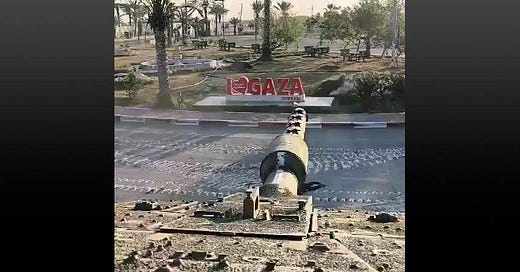



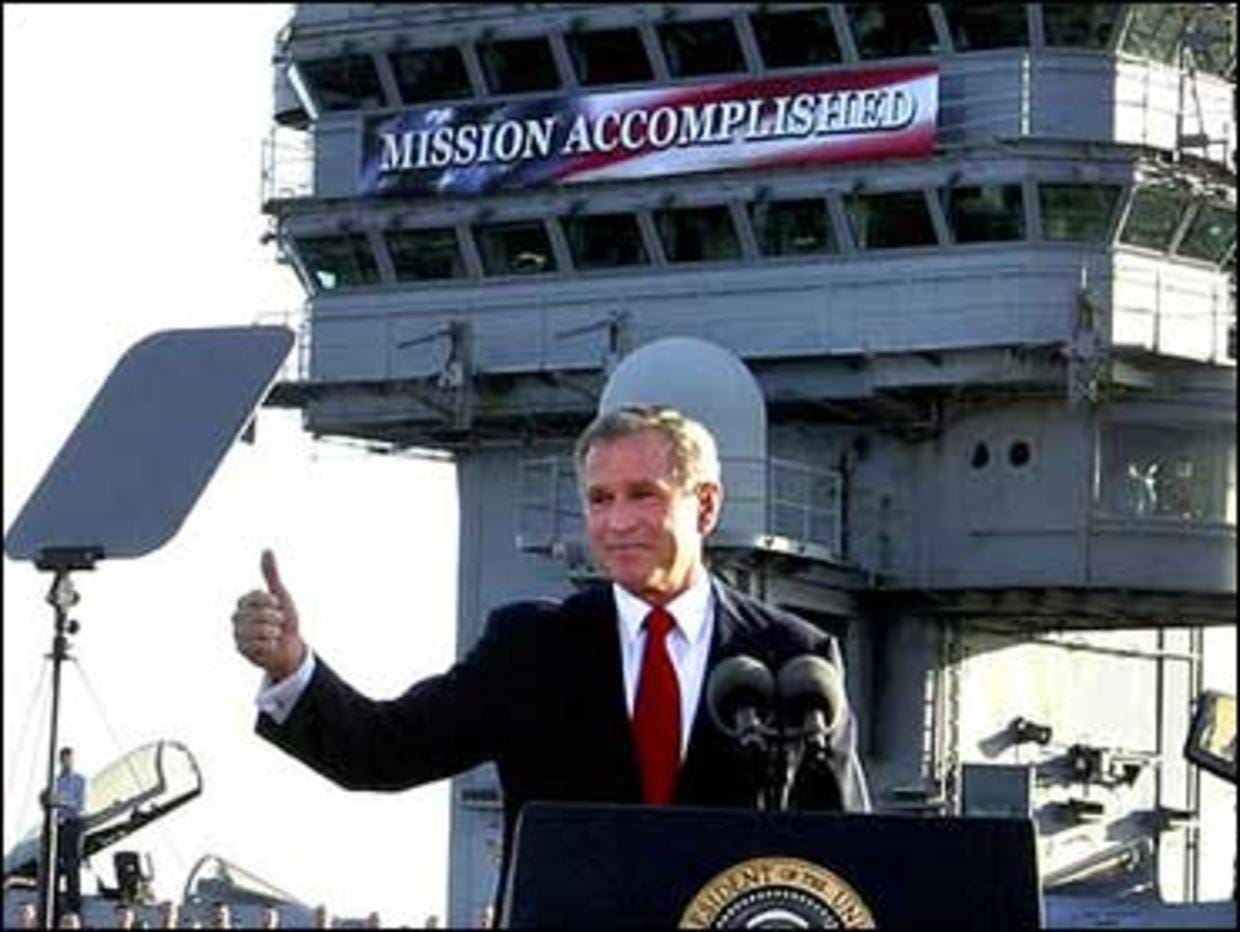
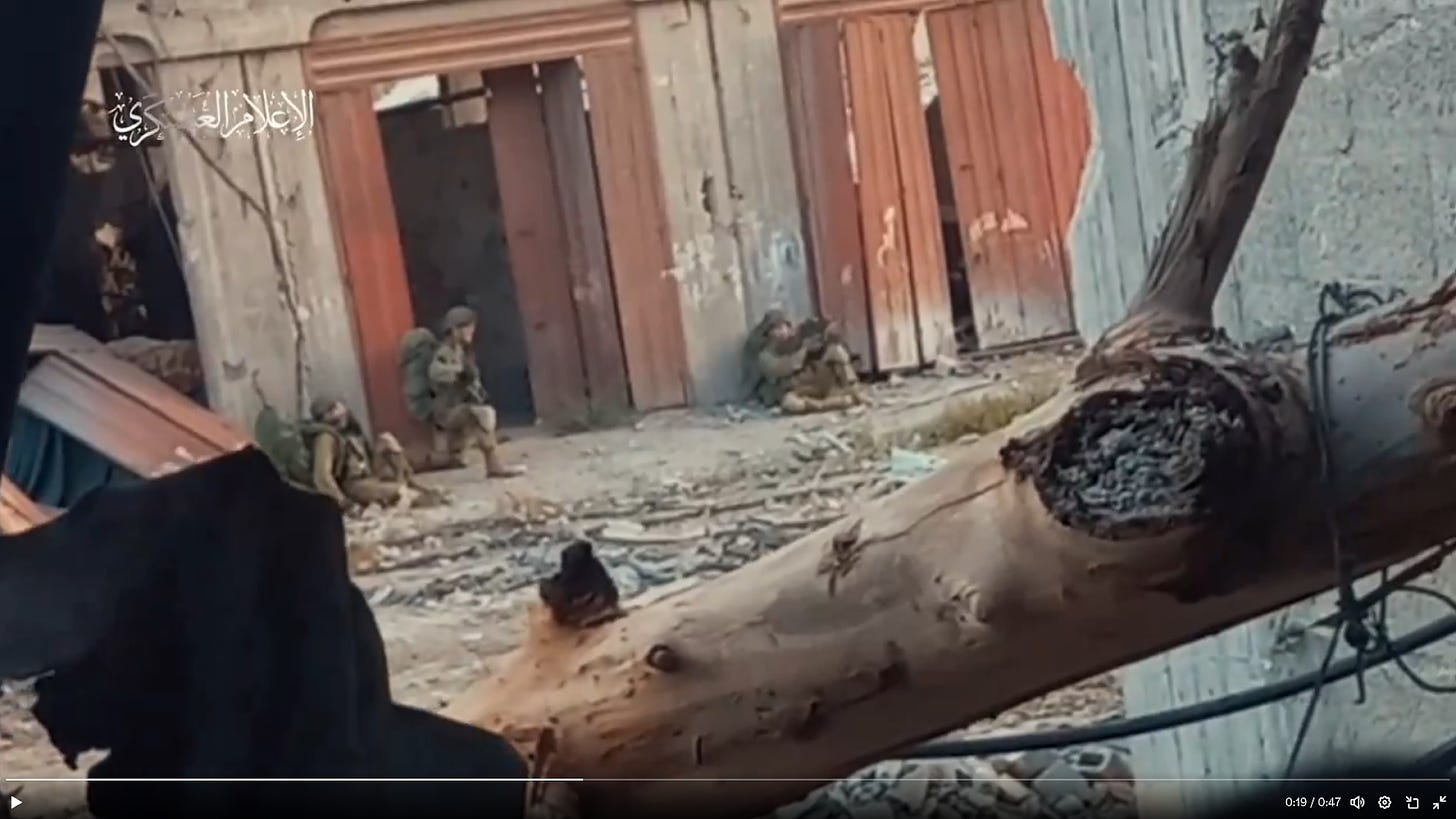
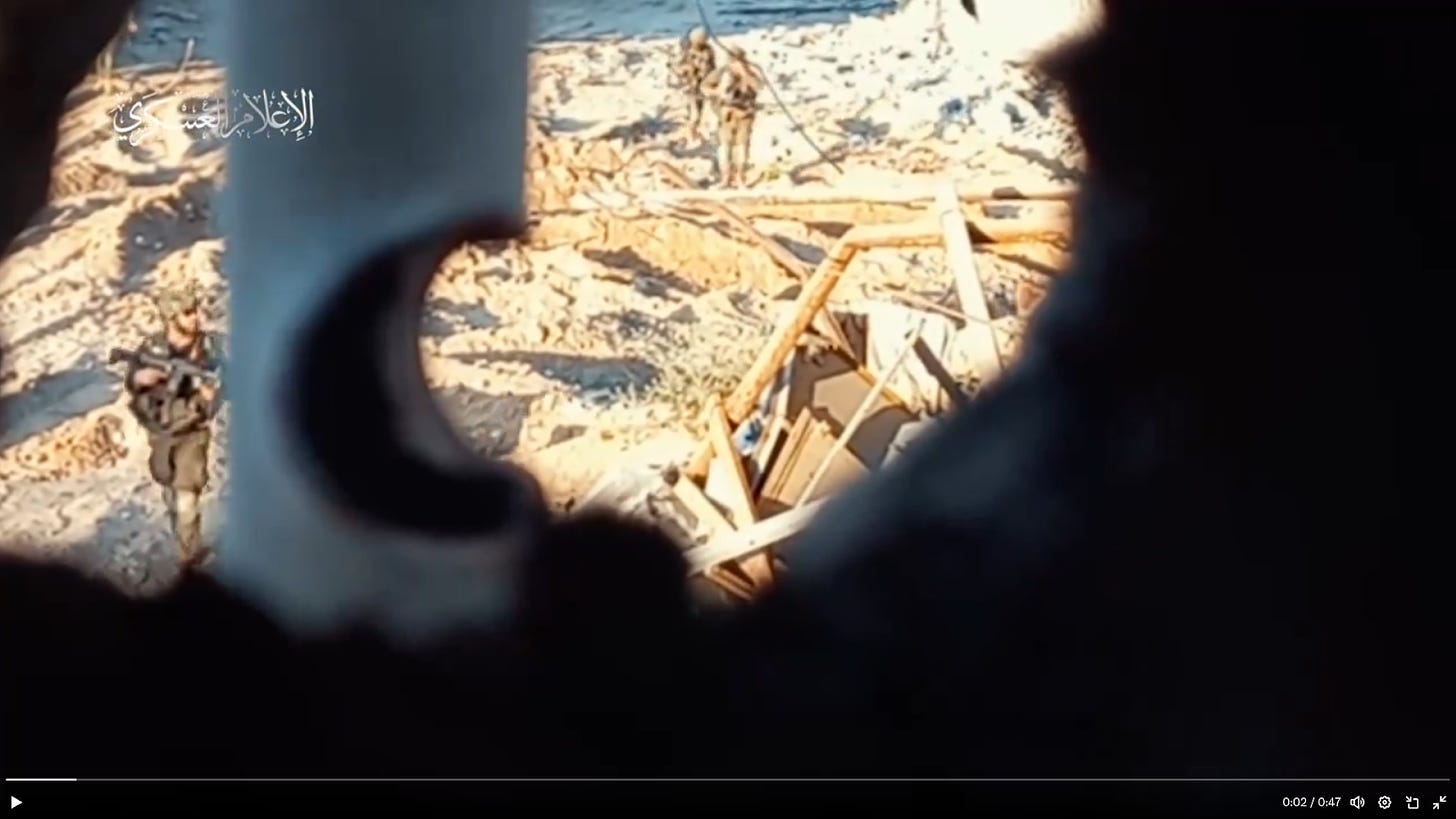
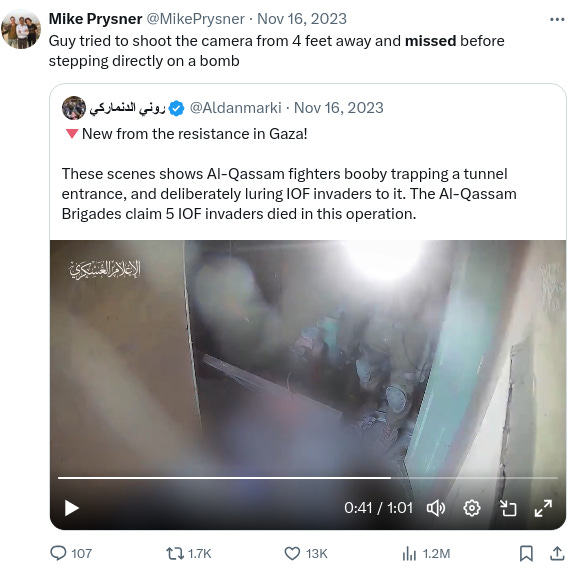
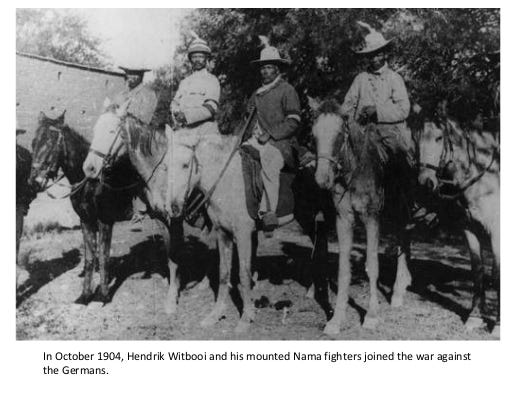
They also thought that mobilizing half a million and gorging on the multi pronged genocidal method would result in a quick victory, so the economic costs and losses were not expected to be a long term risk. Being now stuck, that aspect is looming increasingly larger and frightening for the cult entity of psycho sadistic plunderers.
Excellent article